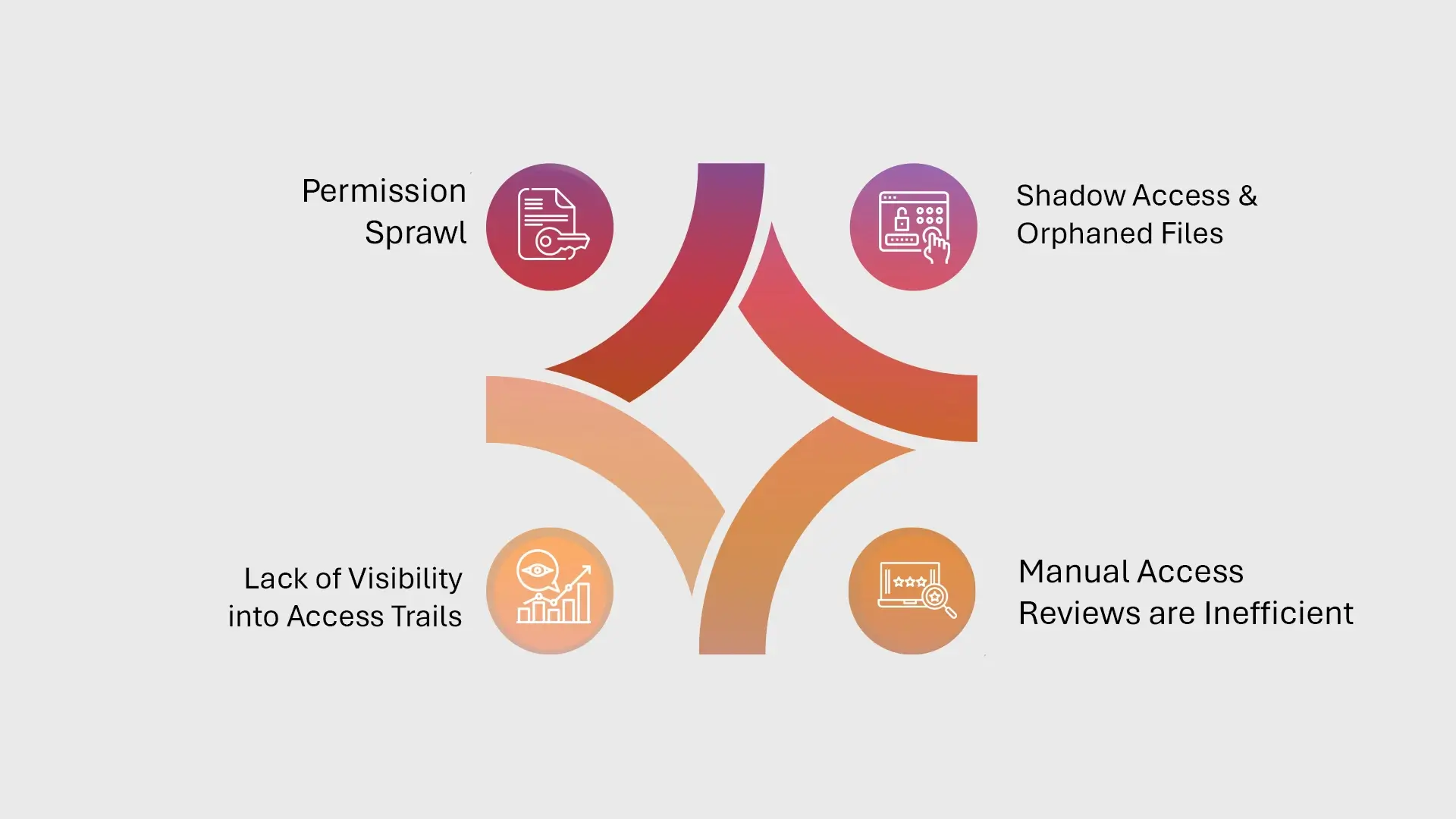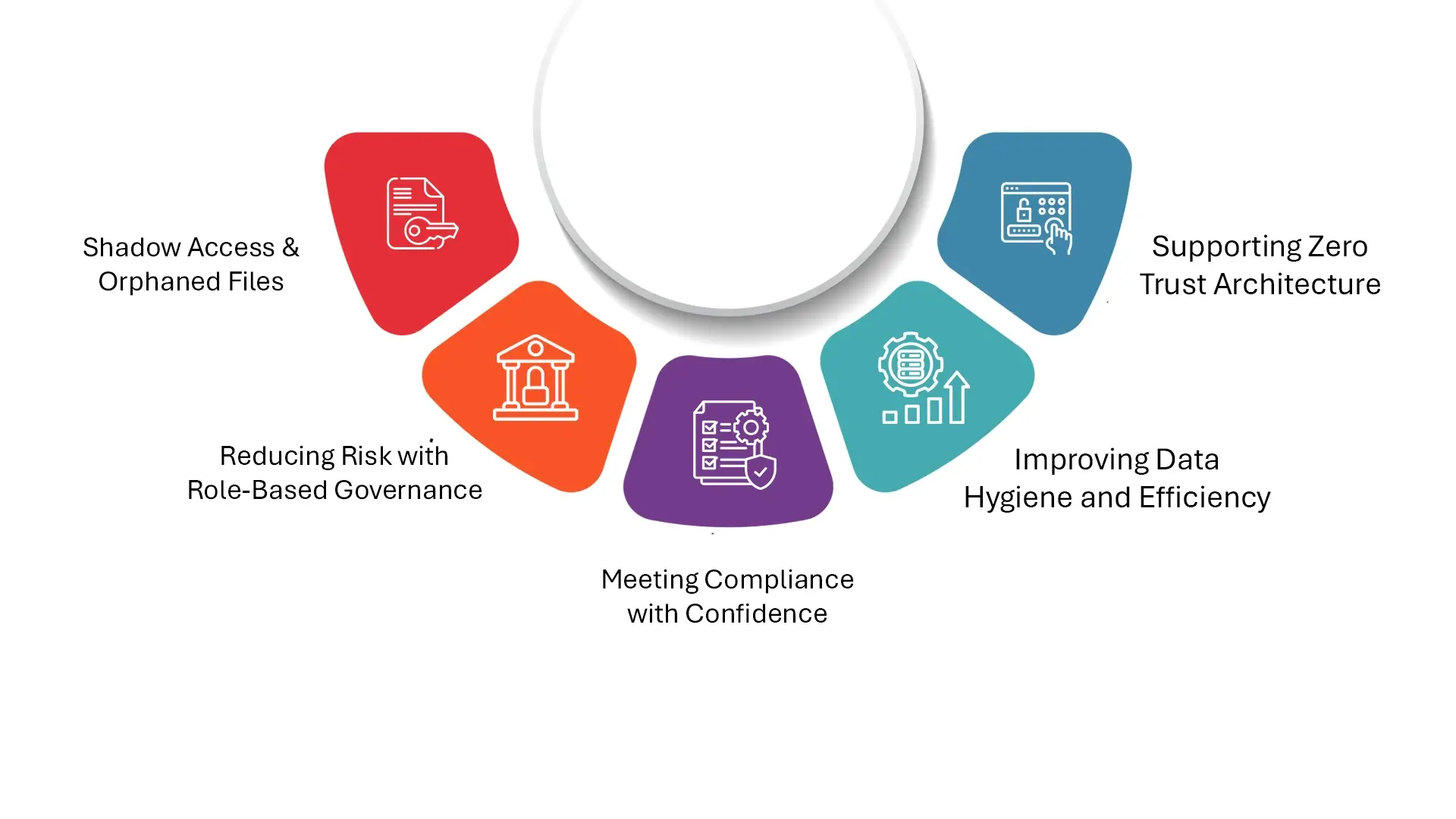What is Access Control & File Re-permissioning?
Access Control & File Re-permissioning involves managing and updating the permissions and access rights to files and data within an organization. Access Control defines and enforces who can view, modify, or manage specific data, ensuring that only authorized users or systems can access sensitive information. File Re-permissioning is the process of adjusting these permissions to reflect changes in user roles, security policies, or regulatory requirements. This combined approach ensures that data access remains secure, up-to-date, and aligned with the organization’s current needs, helping to protect against unauthorized access and ensuring compliance with security standards.
Why It Matters in Today’s AI Era
As enterprises race to build and train AI models, they are tapping into massive stores of unstructured data—emails, reports, documents, logs, and more. But here’s the problem: AI doesn’t distinguish between sensitive and non-sensitive data unless it’s told to. If an AI model ingests a dataset with misconfigured permissions—say, employee payroll data or confidential legal documents—it could lead to unintended exposure, compliance violations, or even biased outputs due to tainted training data.
Access control, therefore, is the gatekeeper. It ensures that data used by humans and machines is governed, ethical, and risk-aware. File re-permissioning, on the other hand, is the process of re-evaluating and correcting inherited, stale, or overly broad access rights—something that becomes more critical as data flows across departments, geographies, and cloud platforms.
The Access Dilemma in Modern Enterprises

As organizations accumulate massive volumes of unstructured data across hybrid cloud systems, legacy permissions and decentralized ownership create a tangled web of access rights. Without the right visibility and control, enterprises face mounting risks that can derail compliance, compromise security, and hinder the ethical use of AI.
- Permission Sprawl: Over time, file permissions can become outdated, duplicated, or overly permissive—especially in large-scale collaborative environments. This creates significant blind spots for CISOs and IT leaders who are trying to protect sensitive data.
- Shadow Access & Orphaned Files: Users come and go, but their permissions often linger. Orphaned data with no clear ownership and unrestricted access poses serious risks, especially in regulated industries.
- Lack of Visibility into Access Trails: Enterprises struggle with knowing who has access to what, why, and how those permissions were granted. This lack of traceability makes audits and investigations complex and time-consuming.
- Manual Access Reviews are Inefficient: Traditional review cycles—typically spreadsheet-based—are slow, error-prone, and ineffective in dynamic environments where data grows by terabytes each month.
How Access Control & File Re-permissioning Help

- Enabling Ethical AI Development: By ensuring that only the right data is used by AI systems, organizations can avoid bias, prevent data poisoning, and uphold ethical standards in model training.
- Reducing Risk with Role-Based Governance: Implementing fine-grained, role-based access control (RBAC) paired with automated re-permissioning helps minimize exposure and strengthen an organization’s data security posture.
- Meeting Compliance with Confidence: Whether it’s GDPR, HIPAA, DPDP, or other privacy frameworks, re-permissioning ensures that access policies remain aligned with data privacy laws, helping organizations stay ahead of audits and avoid penalties.
- Improving Data Hygiene and Efficiency: Clean, well-permissioned data environments improve operational efficiency and reduce the noise when detecting genuine anomalies or security threats.
- Supporting Zero Trust Architecture: In a Zero Trust model, access is never assumed and always verified. Re-permissioning is a core enabler of this approach, ensuring continuous validation of access rights.
Access Control & File Re-permissioning are no longer just about locking down files—they’re about enabling secure innovation in a data-first world. As AI and automation become core to business operations, enterprises must ensure that every byte of data is accessed purposefully, permissioned correctly, and governed ethically. Re-permissioning transforms your data environment from a high-risk liability to a high-trust, compliant, and AI-ready foundation.
Getting Started with Data Dynamics:
- Learn about Unstructured Data Management
- Schedule a demo with our team
- Read the latest blog: Data Sovereignty 2.0: The Strategic Lever for Global Resilience and Innovation






